|
The Sun in Music-- Stanford Solar Center
The Sun in Music
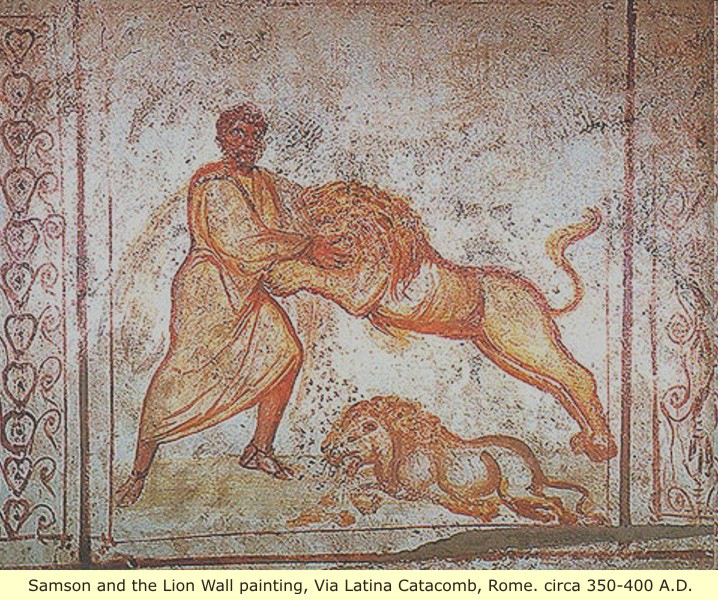
Photo courtesy wikipedia

Photo (c) 1998 by Andreas Gada & Jerry Lodriguss; used with permission
|
Samson, whose name means "man of the Sun", is a biblical character mentioned in the Book of Judges. According to the account, Samson was
given supernatural strength by God so he could combat his enemies and perform herioc feats.
In George Frideric Handel's oratorio "Samson", the strong-man sings a lament about the loss of his eyes by the Philistines, comparing his
fate to that of a total solar eclipse:
Total eclipse! No sun, no moon!
All dark amidst the blaze of noon!
Oh, glorious light! No cheering ray
To glad me eyse with welcome day!
Why thus depriv'd Thy prime decree?
Sun, moon, and stars are dark to me!
Handel's Samson Oratorio
About the Samson Oratorio
About the biblical figure Samson
|
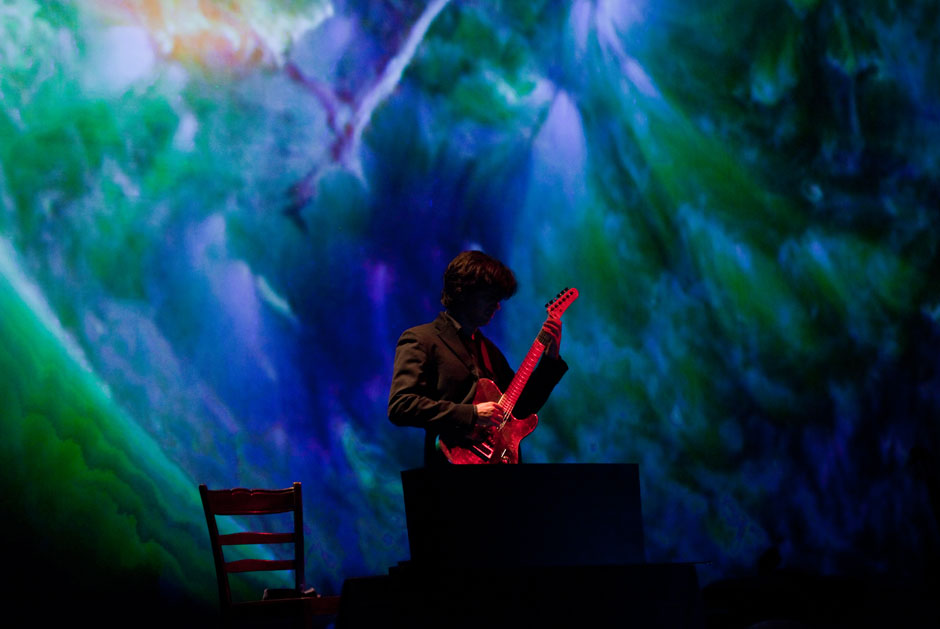
|
Composer and artist Yuval Avital
bridges the gap between science and art by
translating the imagery and energy of astronomical objects
into sounds, compositional structure, and music.
In addition to incorporating Alexander Kosovichev's
Sounds of the Sun,
Avital also uses sonic translations
of Jupiter, Saturn, and Black holes (from Philippe Zarka, Observatoire
de Paris)) and the
NASA historical missions sound
archives.
Watch Unfolding Space,
a concerto for guitar, live electronics, visuals, and sonic translations of
cosmic space.
|
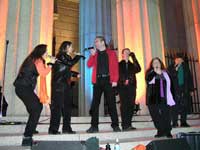
|
The Sun Song
The "Chromatics" is a unique, high-energy, a-capella vocal band that
delights audiences across the country. Originally formed in 1993 at NASA's
Goddard Space Flight Center, the Chromies wrote and produced their
astronomically correct songs, a project they call AstroCappella. "The Sun
Song" is one of them.
Watch
the Video
Image Source: www.thechromatics.com
|

|
Why
Does the Sun Shine?
Why
Does the Sun Shine? ("The Sun is a Mass of Incandescent Gas")
Why Does the Sun Really Shine? ("The Sun is a Miasma of Incandescent Plasma")
They Might
Be Giants is an American alternative music group from Brooklyn,
New York. Above are videos of two songs from their educational album Here Comes Science
.
|
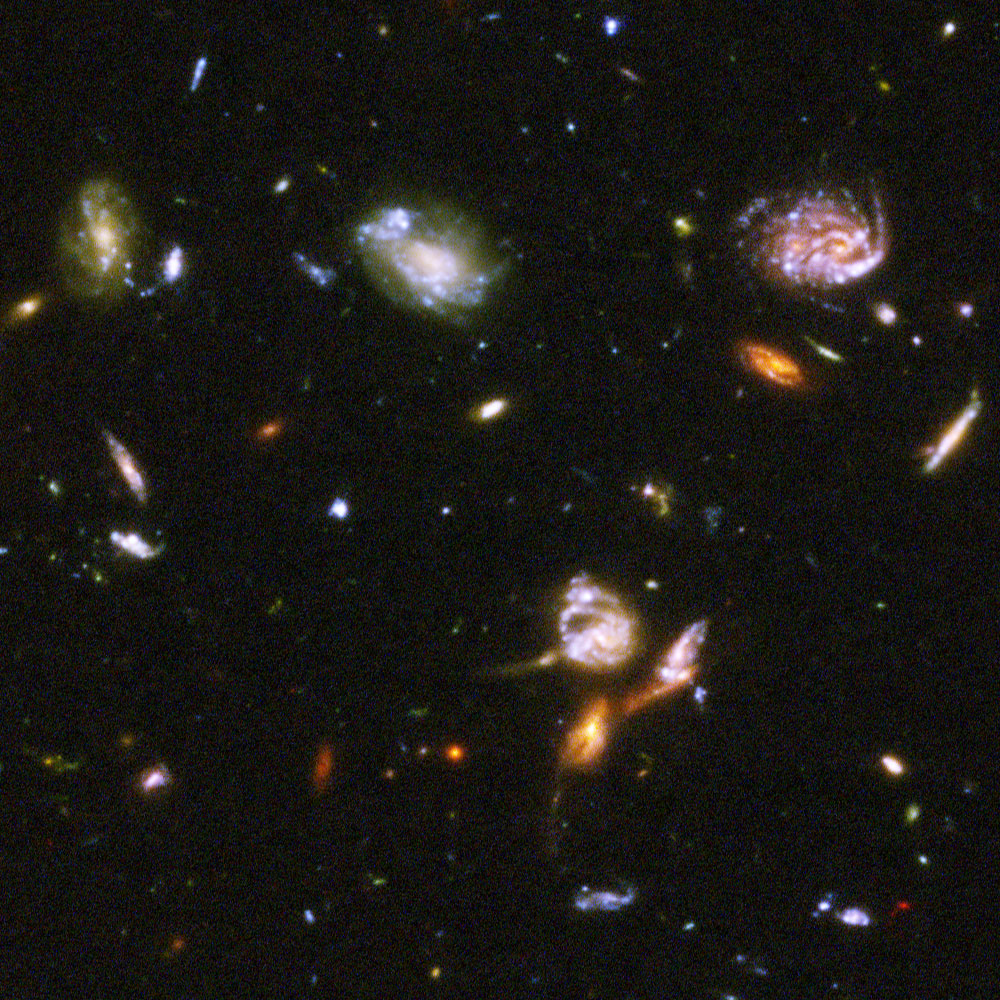
|
Dr. Alan Marsher is another astronomy professor, from Boston University, who writes and performs his own
"science nerd" songs. Check him out at:
Hear Alan Marsher
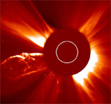
|
The SolarDuo Project
Koray Tahiroglu and Joni Lyytikainen use self-built solar panel instruments
in performances that include soundscapes from solar data and videos
from SOHO. The website features videos of previous concerts.
Image Credit: SOHO/LASCO
(ESA & NASA)
|

Sounds of the Sun |
The Singing Sun:
Listen to the Sun sing it's own rhythmic and powerful melody. |
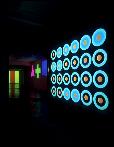 |
Solar Music Based on Solar Data Thorbjoern Lausten, a Danish
artist, has converted solar data to both visual imagery and sound. See
and hear his work at: Data from
Two Suncycles. (Enter the website, then click on the Sound and Video
links.) |
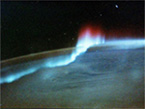 |
Dance
of the Auroras
A performance featuring music, dance, images, and movies produced by
the Dance Construction Company
Watch
a Video Clip
Image Credit: NASA
|
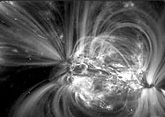 |
The Sounds of Space Project at UC Berkeley- A project that
uses sonification, or the process of turning data into sounds. Read
more about the project, listen to samples, and download a sonification
application.
See also- UC
Berkeley News Press Release- Space scientists find that solar wind becomes
music in the right hands (4/20/06).
|
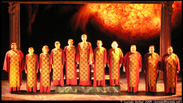
|
Space
Weather in Mozart Operas
The West Bay Opera's performance
of Mozart's "The Magic Flute" included this scene featuring
the Temple Priests in "The Kingdom of the Sun."
(Photo courtesy
of Lucinda Surber) |
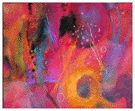
Shattering Suns Symphony |
Here "The Heart of the Sun" -- central movement of
Shattering Suns, a symphony written by
Stephen
Taylor, and inspired by images of celestial catastrophe. This movement
represents a portrait of the Sun, an atomic furnace which contracts and
expands as a living being breathes. The music is built on the breathing
-- the sounds of the Sun, as recorded by SOI researchers -- and played
by a synthesizer. |
|
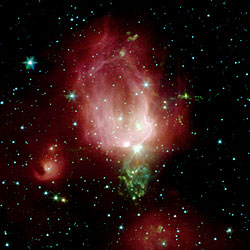
|
Christopher Reynolds and Urrealism
"We consider the cosmos and all that is in it to be a work of art. Urrealist
practice deepens the experience of the natural world and we find this
pleroma is just as much a form of inspiration and language as the art
of humanity." Listen to Christopher Reynolds' cosmology- and solar-symbolism
music, and read more about the urrealist thoughts at
http://www.urrealist.com |
|

|
"Astrophysicist and musician Dr. Fiorella Terenzi
has a doctorate in physics from the University
of Milan, has studied opera and composition, and taught math and physics
to hundreds of students. In research at the Computer Audio Research Laboratory
at the University of California San Diego, she developed techniques to
convert radio waves from galaxies into sound - released on her CD "Music
from the Galaxies" (Island Records). In lectures and performances, on
television and at planetariums, Dr. Terenzi has combined science and art
to awaken people to the universe around them." |
|
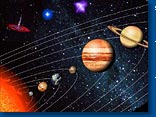 |
Space Sounds
You can listen to the sounds of the solar system and outer space on this
website. The sounds they use for the Sun were developed by our group here
at Stanford. To explore these, go to the website, clock on the "Spacesounds"
title, then click on the Space Sounds Navigator. When the solar system
image appears, click on the Sun. |
|
 |
Dramatic Artist Celebrates Connection between Music, DNA, and Light --
Bioheliosynthesis!
Digital artist Brian LaRossa has creatively explored the relationship
between human and solar energy by using music to translate DNA into light.
His exquisite imagery unites the visual portion of a human chromosome
with selected tones and hues into a light-based conceptual whole. According
to LaRossa, the experience is comprised of precisely choreographed orbits
of cycling color and related sound that, when blended together, create
a meditative climate. |
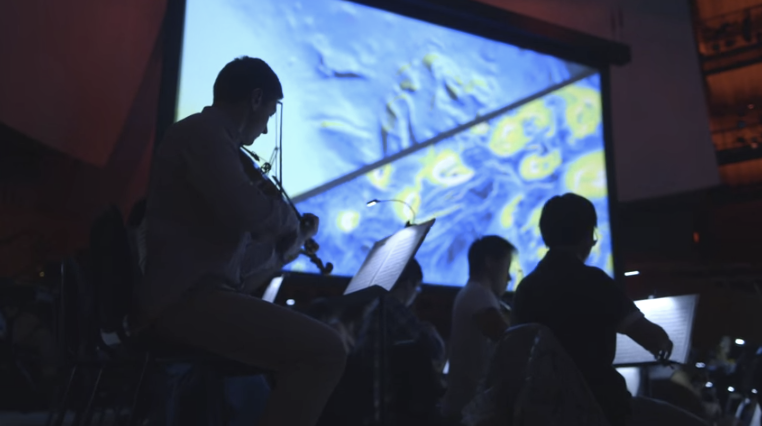 |
The Planets Align
In February 2015, the Stanford Symphony Orchestra performed The Planets
by Gustav Holst, as a part of the Stanford Arts Institute project "Imagining the Universe".
The performance included images of the solar system to accompany each movement and planet
of the solar system. You can also view the production on Youtube.
|
|
|
Image credits: Whirlpool Galaxy from NASA and the Hubble Heritage Team (STScI/AURA)
|


















